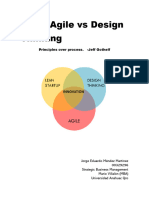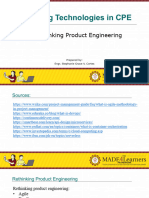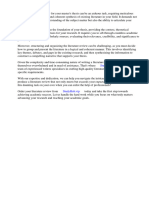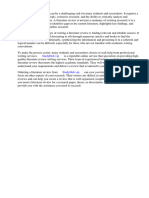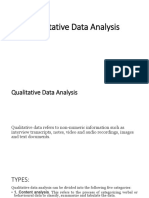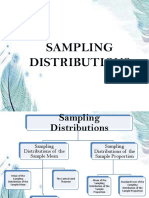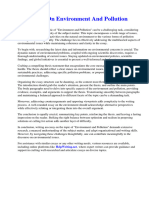0% found this document useful (0 votes)
116 views23 pagesCPE432 - Lecture Notes 3
The document discusses three methodologies for rethinking product development: Lean Startup, Design Thinking, and Jobs-to-Be-Done framework. Lean Startup focuses on building minimum viable products and validating hypotheses through customer feedback. Design Thinking is a non-linear process of empathizing with users, defining problems, ideating solutions, prototyping, and testing. The Jobs-to-Be-Done framework examines what jobs customers need a product to do rather than just the product itself.
Uploaded by
afdsalado113Copyright
© © All Rights Reserved
We take content rights seriously. If you suspect this is your content, claim it here.
Available Formats
Download as PDF, TXT or read online on Scribd
0% found this document useful (0 votes)
116 views23 pagesCPE432 - Lecture Notes 3
The document discusses three methodologies for rethinking product development: Lean Startup, Design Thinking, and Jobs-to-Be-Done framework. Lean Startup focuses on building minimum viable products and validating hypotheses through customer feedback. Design Thinking is a non-linear process of empathizing with users, defining problems, ideating solutions, prototyping, and testing. The Jobs-to-Be-Done framework examines what jobs customers need a product to do rather than just the product itself.
Uploaded by
afdsalado113Copyright
© © All Rights Reserved
We take content rights seriously. If you suspect this is your content, claim it here.
Available Formats
Download as PDF, TXT or read online on Scribd
/ 23













